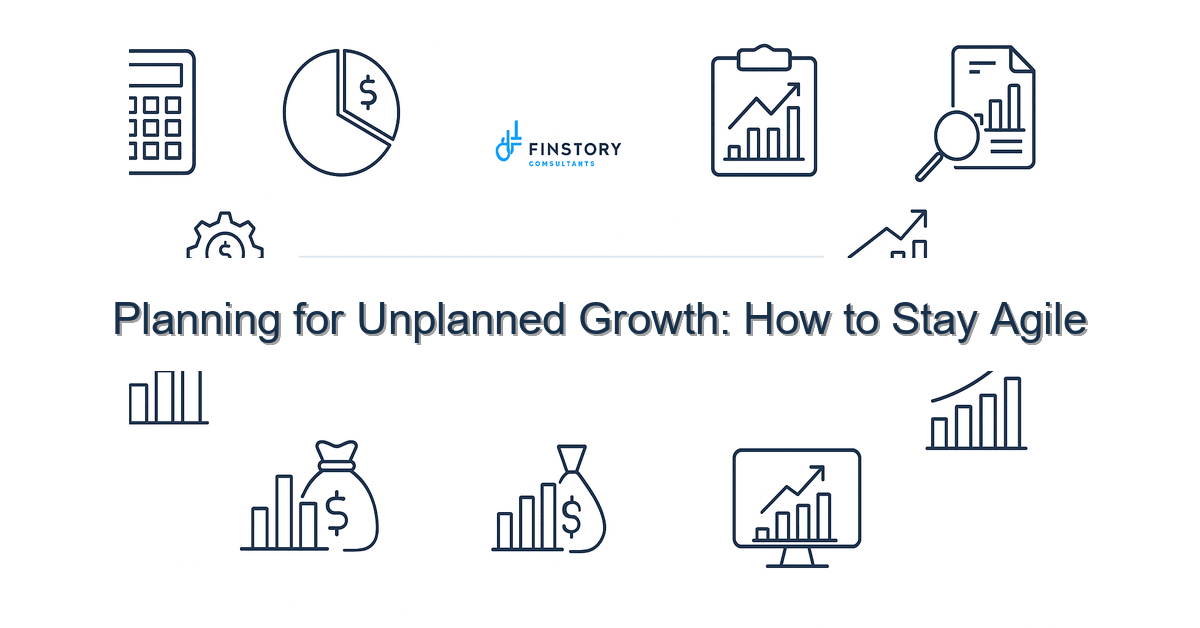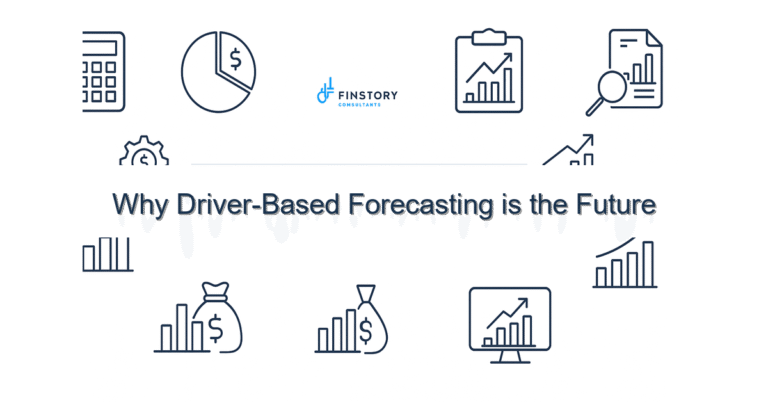Planning for Unplanned Growth: How to Stay Agile
Growth that arrives early, suddenly, or in the wrong place can feel like a medical emergency for your operations and finance teams. You know it’s good news—but it also exposes fragile processes, late reports, and strained cash flow. You’re not alone; most healthcare leaders have been on that shift.
Summary: The key win here is turning surprise growth into a predictable, manageable event. With a focused plan—scalable forecasts, fast scenario modeling, automated data flows, and decision-ready reports—you can protect margins, staff capacity, and service quality while capturing opportunity.
What’s the real problem?
Unplanned growth isn’t just a numbers problem. It breaks rhythms across clinical operations, revenue cycle, supply chain, and the finance office. When volume jumps or a new program takes off, the organization scrambles: hiring lags, supplies run short, cash forecasting falters, and leadership makes reactive, not strategic, decisions.
- Late or inaccurate forecasts that miss the real timing of cash and capacity needs.
- Manual reconciliations and reporting that create decision lags measured in weeks.
- Rigid budgets and approval gates that slow hiring or resource shifts.
- Siloed data—clinical, operational, and financial—that prevents holistic tradeoff analyses.
What leaders get wrong about planning for unplanned growth
Leaders want control, so the instinct is to lock down approvals, centralize decisions, or wait for the next monthly report. Those reactions are understandable, but they usually make things worse.
Common pitfalls:
- Assuming the past predicts the future: using static annual budgets to handle rapid volume changes.
- Over-reliance on spreadsheets: too slow, too error-prone, and too isolated from operational truth.
- Delaying decisions until more data arrives, which costs opportunity and allows costs to escalate.
- Treating growth as a one-off problem rather than a capability to build—so you repeat the scramble next time.
A better approach to planning for unplanned growth
Think of unplanned growth as a recurring risk that you can make institutional—manageable with repeatable processes. Here’s a practical 4-step framework that works in healthcare settings.
- 1. Maintain a fast, rolling forecast: Move from annual budgets to a 13- to 26-week rolling forecast that updates weekly. Focus on the drivers: patient volume by service line, payer mix, staffing ratios, and supply utilization.
- 2. Build decision-ready scenarios: Predefine three scenarios—conservative, base, and surge—with clear triggers (e.g., 10% outpatient volume growth for 4 weeks). Tie each scenario to actions: temporary staffing, supply reorder points, or cap on elective services.
- 3. Automate data flows and key KPIs: Connect the EHR, RCM, payroll, and supply systems to finance dashboards so variance signals appear within days, not months.
- 4. Delegate with guardrails: Empower operational leaders to act within preapproved thresholds. Use approvals only for exceptions beyond those thresholds to speed responses.
Short story: A mid-size regional health system we worked with saw a 22% surge in outpatient imaging after a new referral partnership. Because they had a 13-week rolling forecast and scenario triggers in place, they reallocated technologist hours, increased mobile capacity, and negotiated a short-term device rental—avoiding overtime spikes and delivering a 6% margin preservation compared with a no-plan scenario.
Quick implementation checklist for planning for unplanned growth
- Set up a 13-week rolling forecast template tied to volume drivers this week.
- Define three scenarios (conservative/base/surge) and numeric triggers for each.
- Identify the 6-8 KPIs that will drive decisions (e.g., daily patient starts, labor hours per case, supplies burn rate, net AR days).
- Automate one data feed (payroll or RCM) into a dashboard within 30 days.
- Create a one-page decision matrix for operational leaders with delegation limits.
- Run a tabletop exercise simulating a 15% volume surge this month.
- Agree on a communication cadence: daily ops huddle, twice-weekly finance brief, weekly executive decision call.
- Document temporary staffing and supply vendor options and pre-negotiate rates.
What success looks like
Measure progress with these outcomes—aim for concrete targets you can track:
- Forecast accuracy: reduce 13-week variance to <5% for key revenue streams.
- Decision latency: cut time from signal to operational action from days/weeks to <48 hours.
- Cycle time for reporting: move from monthly closes to operational-ready weekly reports.
- Cost containment: avoid >70% of incremental overtime or agency spend in surge events.
- Cash resilience: maintain >=X days of operating cash by improving AR or timing assumptions (set your target).
- ROI: realize payback on automation and scenario planning in 6–12 months through preserved margins and avoided premium spend.
Risks & how to manage them
Top risks when shifting to an agile planning model:
- Overconfidence in models: Models are only as good as inputs. Mitigation: validate scenario assumptions with clinical and supply chain leads and update weekly.
- Data trust issues: Teams resist automated reports if they don’t trust the numbers. Mitigation: start with a ‘shadow’ report that compares to legacy numbers for 6–8 weeks, and run reconciliation routines.
- Governance overload: Too many exception approvals slow response. Mitigation: tighten thresholds and document an escalation path that emphasizes fast, reversible decisions.
Tools & data
Practical tools that make this work:
- Finance automation to pull payroll, AP, and AR into a central model (reduces manual reconciliation).
- Power BI or equivalent for interactive dashboards that combine clinical and financial KPIs.
- Leadership reporting packs: a one-page daily dashboard for operations and a weekly finance brief for executives.
Combine automation with human reviews. Technology surfaces the signals; leaders interpret them. If you want tech examples, see our posts on FP&A automation and weekly rolling forecasts: FP&A Automation and our service page for finance transformation: Finance Transformation. For practical budgeting tips for growth, read Budgeting for Growth.
FAQs
Q: How is a 13-week rolling forecast different from regular forecasting?
A: A 13-week rolling forecast updates frequently and focuses on near-term cash and capacity drivers rather than annual targets. It helps you act quickly when volumes move.
Q: Can small hospitals adopt this without big IT projects?
A: Yes. Start small: automate one key feed (payroll or admissions), build a driver-based spreadsheet or Power BI dashboard, and run weekly updates. Scale automation incrementally.
Q: What’s a reasonable delegation limit for operational leaders?
A: It depends on size, but a common approach is to allow local managers to authorize staffing changes up to a percentage of budgeted labor hours (e.g., +10%) and require finance sign-off above that. Tie limits to scenarios and thresholds.
Q: How often should scenario triggers be reviewed?
A: Review triggers monthly and after any major event (new contract, service line launch, or regulatory change). Triggers should be living—adjust as you learn.
Next steps
If you’re ready to move from reactive to ready, start with a 90-day sprint: set up the rolling forecast, automate one data feed, and run a surge tabletop. If you want help building the plan, testing scenarios, or standing up dashboards, contact Finstory—our teams work with healthcare finance and operations to make this practical and sustainable.
Work with Finstory. If you want this done right—tailored to your operations—we’ll map the process, stand up the dashboards, and train your team. Let’s talk about your goals.
Primary keyword: planning for unplanned growth. Long-tail variations used: financial planning for unplanned growth in healthcare; agile operations planning for sudden growth; healthcare finance strategies for unexpected growth.
📞 Ready to take the next step?
Book a 20-min call with our experts and see how we can help your team move faster.
Prefer email or phone? Write to info@finstory.net
or call +91 44-45811170.






